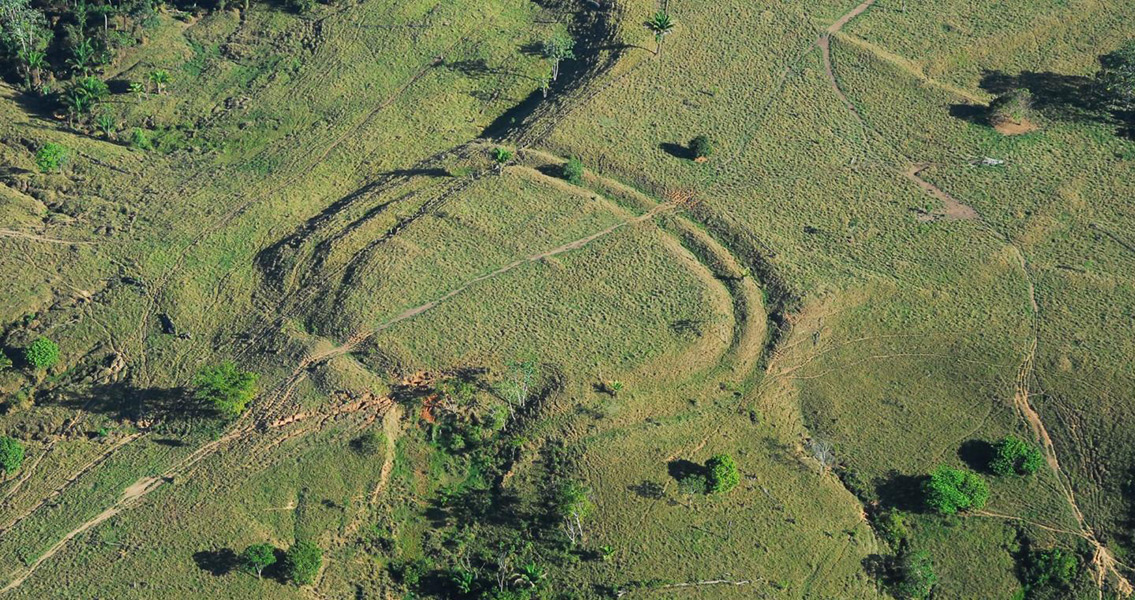<![CDATA[More than 450 massive geometrical geoglyphs have been discovered in the Amazonian rainforest, but scientists remain perplexed about exactly what these spectacular structures were used for. Stretching across an area of 13,000 sq.km, the series of earthworks are providing fresh insight into the lives of indigenous people in the Amazonian rainforest before the arrival of Europeans. Located in Acre state in the western Brazilian Amazon, the ditched enclosures have been obscured from view for centuries by the dense jungle. It was only modern deforestation that exposed the hundreds of large, mysterious earthworks. Precisely what function the structures served is far from clear. Very few artefacts have been discovered during excavations, meaning the earthworks are unlikely to have been villages. Another possibility is that they were defensive fortifications, but the layout of the geoglyphs doesn't support that hypothesis. According to scientists who analysed them, it seems the earthworks were only used sporadically, raising the possibility that they were some kind of ritual gathering places. The geoglyphs are over two thousand years old, say the team of British and Brazilian archaeologists who studied them. Their findings show the ways in which the rainforest was transformed millennia ago by the region's indigenous inhabitants. "The fact that these sites lay hidden for centuries beneath mature rainforest really challenges the idea that Amazonian forests are 'pristine ecosystems`." said Jennifer Watling, post-doctoral researcher at the Museum of Archaeology and Ethnography, University of São Paulo. "We immediately wanted to know whether the region was already forested when the geoglyphs were built, and to what extent people impacted the landscape to build these earthworks." Dr. Watling and her team reconstructed 6000 years of vegetation and fire history around two of the geoglyph sites. They discovered humans had drastically altered bamboo forests for thousands of years, and produced temporary clearings to allow the construction of the geoglyphs. The process undertaken by the ancient Amazonians was a far cry from current deforestation techniques, however. Rather than indiscriminately burning acres of forest, people transformed their environment by only focusing on the most valuable trees, such as palms. "Despite the huge number and density of geoglyph sites in the region, we can be certain that Acre's forests were never cleared as extensively, or for as long, as they have been in recent years." Dr. Watling explained. "Our evidence that Amazonian forests have been managed by indigenous peoples long before European Contact should not be cited as justification for the destructive, unsustainable land-use practiced today. It should instead serve to highlight the ingenuity of past subsistence regimes that did not lead to forest degradation, and the importance of indigenous knowledge for finding more sustainable land-use alternatives". The study is set to be published in a forthcoming issue of the Proceedings of the National Academy of Sciences. Dr. Watling worked alongside researchers from the universities of Exeter, Reading and Swansea (UK), São Paulo, Belém and Acre (Brazil) on the study. Image courtesy of Jenny Watling]]>
Mysterious Ancient Geoglyphs Found in Amazon Rainforest
